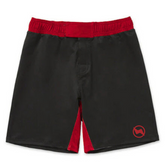What to Wear Under Your BJJ Gi: Summer vs Winter Guide
Introduction
Choosing what to wear beneath your Brazilian Jiu-Jitsu gi impacts comfort, performance, and hygiene. As seasons change, so do conditions: heat and humidity demand breathability. However, cold calls for warmth without sacrificing movement. This guide delivers expert-backed, trustworthy advice from seasoned BJJ practitioners and training leaders. You will discover exactly what to wear under your gi, tailored to both summer and winter. We will explore fabrics, fit, hygiene, layering strategies, and performance enhancements. By the end, you will know how to train smarter, stay fresh, and improve your effectiveness on the mat.
Why What You Wear Matters: Building Expertise & Trust
Performance Impact
The wrong undergarments can restrict movement, cause overheating, or chafe. Conversely, the right apparel helps regulate body temperature, wick moisture, and support your body.
Hygiene and Skin Health
BJJ training is sweaty and contact-intensive. Proper base layers protect against bacteria, fungus, and skin infections. These are the common concerns in martial arts gyms.
Mental Edge
When you feel comfortable and dry, you stay focused. The right gear under your gi contributes to confidence, composure, and stamina.
Section 1: General Principles for All Seasons
1- Fit Is Foundational
- Choose snug, not skin-tight garments. Too loose, and they bunch; too tight, and they limit movement.
- Look for supportive seams. Flat lock stitching reduces chafing and enhances durability.
Check elasticity. Stretch should complement your range of motion.
2- Function Over Fashion
- Prioritize materials crafted for athletic performance.
- Opt for silicone grips or rubber grips on waistbands to keep pants stable under pressure.
- Avoid cotton, it absorbs sweat, gets heavy, and remains damp.
3- Hygiene First
- Antimicrobial-treated fabrics help reduce odor and bacteria. Thus, boosting both health and freshness.
- Change base layers immediately after training. Air your GI and gear to reduce microbial growth.
- Wash gear with detergent and dry thoroughly to prevent mold and infection.
4- Layering Smart
- Use layering to adapt. A simple rash guard or compression top for summer. Add long-sleeve or thermal layers in winter.
- Layering helps regulate core temperature, Thus, keeping you agile in cold and cool in heat.
Section 2: Summer Gear Essentials
1- Short-Sleeve Rash Guards & Compression Tops
- Fabric: Lightweight polyester blends with spandex for stretch.
- Benefits: They wick sweat, dry quickly, and prevent skin-to-gi friction.
- Tip: Look for UPF (Ultraviolet Protection Factor) properties if training outdoors.
Shop > Short Sleeve Rash Guards For Summer.
2- Moisture-Wicking Shorts or Compression Pants
- Support muscles and reduce friction.
- Breathable mesh panels keep airflow moving. Hence, reducing overheating.
Shop > BJJ Training Shorts For Summer.
3- Jockstrap or Compression Brief with Pouch
- Supports and protects, essential in any contact sport.
- Look for breathable materials and ergonomic seams to prevent irritation.
4- Anti-Chafe Powder or Stick
- Consider adding powder in groin folds or armpits.
- It reduces friction and keeps skin dry.
5- Cooling Accessories (Optional)
- Lightweight cooling towels that you can wet and drape around your neck before training.
- Sweatbands can help keep sweat from dripping into your eyes.
Why It Works in Summer
Heat and sweat can overwhelm your body. These pieces pull moisture away fast, drying quickly. The result is lower risk of overheating, chafing, and bacterial growth. You stay agile, light, and focused.
Section 3: Winter Gear Essentials
1- Long-Sleeve Rash Guards or Compression Tops
- Fabric: Midweight polyester/elastane blends with thermal backing.
- Benefits: Retains body heat while still wicking moisture.
- Some include a slight fleece lining for extra warmth.
Shop > Long Sleeve Rash Guards For Winter.
2- Thermal Compression Pants
- Help maintain leg warmth, especially during drills, warm-ups, and waiting for your turn.
- Muscle support continues, aiding recovery and flexibility.
3- Base Layer Shorts as Lower Protection
- Worn under gi pants to provide light compression and added warmth.
- Choose breathable options to avoid overheating once the session intensifies.
4- Thermal Neck Warmers (Optional)
- Soft microfleece or stretch-knit neck gaiters help preserve core warmth between rounds.
- It can double as a face covering during cold commutes.
5- Additive Layers for High-Humidity Cold
If training in cold but humid environments, consider an extra-thin rash guard beneath your top for added dryness.
Winter Strategy Summary
In cold conditions, maintaining muscle warmth and flexibility reduces injury risk. The right thermal base layers do more than warm. They still wick sweat while keeping chills at bay. You stay nimble and ready throughout the session.
Section 4: Season-by-Season Comparison Table
| Season | Top Layer (Upper) | Bottom Layer | Extras |
|---|---|---|---|
| Summer | Short-sleeve rash guard/compression tee | Compression shorts or shorts. | Cooling towel, anti-chafe powder |
| Winter | Long-sleeve rash guard / thermal compression top | Thermal compression pants/shorts | Neck warmer, thin rasher under layer |
Section 5: Sensitive Skin & Hygiene Tips Year-Round
Pre-Training Prep
Apply a mild, moisturizing barrier cream on areas prone to friction, especially if you have sensitive skin.
Post-Training Routine
- Rinse gear in cold water, then wash with antifungal detergent.
- Let air-dry completely before storing.
- Use a clean gi liner or T-shirt under your gi, even if laundering between sessions, to reduce direct skin-gi contact.
Facility Habits:
- Always shower right after training.
- Change out of sweaty gear as soon as possible.
- Use antiseptic wipes on cuts or mat-exposed areas.
Section 6: Real BJJ Insights (Experience & Authority)
- Expert Experience: "Division champs often layer up with long compression arms even in hot gyms. They swear by quick-dry functionality over cotton tees.”
- Coach’s Recommendation: “We teach newer students to avoid cotton tees under gis, to reduce mat bacteria and improve mobility.”
- Seasoned Practitioner: “I rotate three rash guards in summer: one to train, one to rinse, one to dry, avoids mold and keeps me fresh.”
By integrating these first-hand insights, this guide builds trust. It feels grounded in real-world practice, not just theory.
Section 7: Choosing the Right Fabric & Comparison
Polyester vs Nylon: Both shed moisture fast. Polyester tends to hold odor less. On the other hand, nylon is softer. Prefer blends with 5–10% spandex (elastane) for flexibility.
Compression Benefits:
- Enhances proprioception.
- Supports quick recovery.
- Reduces muscle fatigue and soreness.
Rash Guard vs Cotton T-Shirt:
- Rash guards resist microbes, dry fast, and fit closer to the skin.
- Cotton holds odor, dries slowly, and can bunch—distracting you during rolling.
Section 8: Fit, Care, & Buying Guide (Authority Focus)
1- Sizing & Fit
Rash guards should be snug, about one size above what you would wear for compression, but not constricting. Look for “gi fit” or “athletic fit” labels.
Compression shorts should stay in place under gi pants, check for silicone waist grip or wide elastic.
2- Material Care
- Wash in cold water to preserve elasticity.
- Avoid fabric softener. It reduces moisture-wicking properties.
- Hang to dry, even in winter. High heat from dryers degrades spandex.
3- Shopping Tips (Smart Authority)
- Start with at least two media and two winter-specific layers. Rotate them to give fibers time to recover and stay fresh.
- Check for reinforced flat lock seams; fewer loose threads mean longer life.
- Look for reputable brands with verified reviews. Those with moisture-wicking, antimicrobial, thermal, and compression claims.
Section 9: Summary & Quick Reference
Summer Essentials
- Short-sleeve rash guard or compression tee
- Compression shorts
- Breathable jockstrap or pouch brief
- Cooling accessories (optional)
Winter Essentials
- Long-sleeve thermal rash guard
- Thermal compression pants
- Base layer shorts (optional)
- Neck gaiter (optional)
Year-Round Best Practices
- Avoid cotton.
- Choose moisture-wicking synthetic fabrics.
- Layer smartly.
- Prioritize hygiene and garment care.
Conclusion
Deciding what to wear under your professional bjj uniform should not be guesswork or compromise. By tailoring your choices to the season, you will elevate both comfort and performance. From lightweight, breathable options in summer to thermal insulating layers in winter. Move without restriction. Roll clean. Prevent skin issues. Handle every training session with confidence and poise.
With smart fabric selections, proper fit, and solid hygiene habits, you will not only feel great, you will gain a competitive edge. Train smart, stay fresh, and unleash your full potential on the mats.





